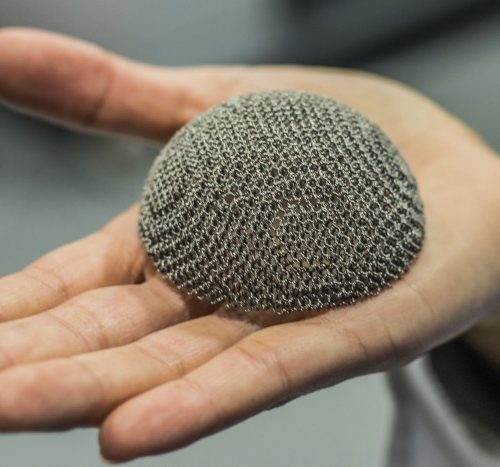How Does Electron Beam Melting Work?
Electron beam melting (EBM) is a relatively new form of additive manufacturing developed by Arcam, a Swedish company, in 1997. The process involves using an electron beam to melt layers of metal powder similar to laser sintering. Most of the parts manufactured using this process are in the medical, aerospace, and defense industries. This process is perfect for manufacturing parts that are dense, lightweight, durable. How Does EBM Work? Electron Beam Melting is similar to DMLS in that it is a part of the powder bed fusion family. However, unlike these forms of additive manufacturing that use a laser to create heat, EBM makes use of a high-power electron beam for heat. The beam melts the metal powder in layers that are fused together by the heat. The process follows these basic steps;
- A layer of powdered metal is used to coat the “build plate”.
- The layer is preheated during which time, the electron beam melts selected areas as determined by the design created in the CAD program.
- A new layer of powdered metal is added and the beam melts it, causing it to fuse to the previous layer.
- The process continues until the part is completed. Once an excess metal has been removed, the part can move on to post-processing.
To ensure nothing is contaminated and the powder doesn’t oxidize, the entire process is completed in a vacuum. What Are the Advantages of EBM? There are several benefits to using EBM in comparison to other additive manufacturing processes.
- The electron beam is far more powerful than the lasers used in DMLS machines, and multiple beams are used at the same time. This means faster printing and increased productivity.
- The parts produced using electron beam melting are far superior to those made using more traditional parts manufacturing processes such as investing casting.
- Parts produced using this method have strong mechanical properties and up to 99 percent density. Because the bed is preheated, there is a marked reduction in residual stress and the need for support structures.
- All unused powder can be captured, recycled, and used for future projects resulting in less waste and reduced overhead costs.
Limited Range of Materials The one issue worth considering is that EBM is only suitable for use with a very limited range of metals. These include alloys of titanium, steel powders, cobalt chrome, and nickel alloy 718. Each of these materials is recognized for its corrosion resistance, high strength, and exceptional mechanical properties. They are also the most common materials for use for parts that will be subjected to high levels of stress. It is also the only process that can work with titanium aluminide (TiAl). This material is preferred in certain applications due to its strength, heat resistance, and lightweight. However, it does have an issue with cracking. To learn more about DMLS and Electron Beam Additive Manufacturing, visit Additive Manufacturing LLC online or give us a call at (877) 238-7907

